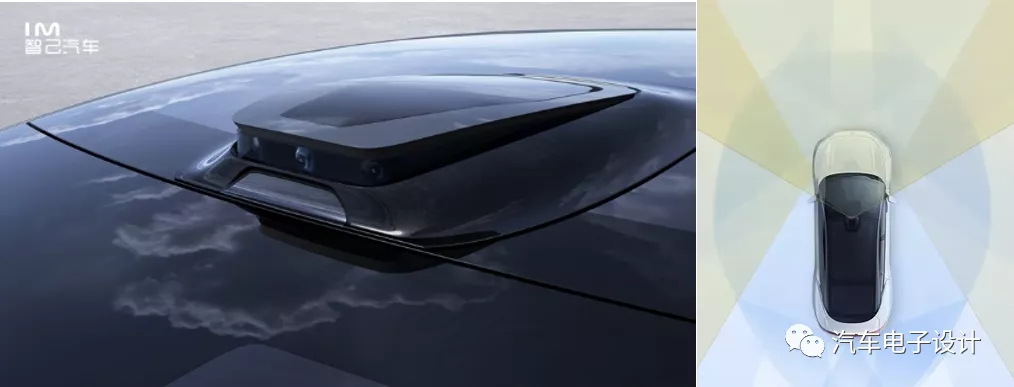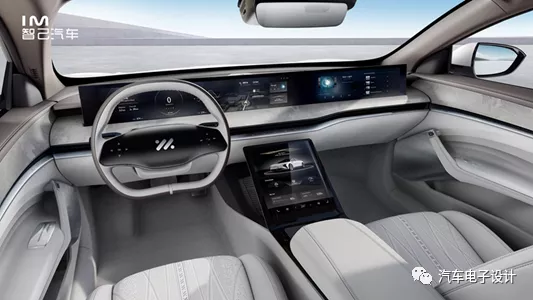Introduction
Today IM has launched two new cars. Although the stock market performance seems to be quite different from NIO’s previous ET7 launch, let’s take a look at the characteristics of these two cars. The six categories of intelligent digital architecture, operating system, sharing interaction, autonomous driving, three-electricity, and quality are all concepts with information overflow. Based on the L project, the essence of the high-end BEV project is to have autonomous driving BEV based on the new EE architecture and three-electricity architecture. OS, interaction, and quality are also common technologies that distinguish product value and are another category.
Autonomous Driving Technology
From the existing release data, the hardware technology of this autonomous driving system is based on standard 15 high-definition cameras, 5 millimeter-wave radars, and 12 ultrasonic radars, coupled with the IPD intelligent driving controller. This system is based on the previous technology, and is a solution for three main scenarios: city driving, highway driving, and automatic parking. The perception system solution is based on multiple Orin chips (500-1000Tops) and lidar, with upgrades made to achieve point-to-point autonomous driving under conditions permitted by regulations. Compared with the previously released ET7, the focus is not on perception or the controller, but on the ability to collect and validate data. By accumulating data, the core algorithm architecture of Data-Driven can be achieved through automatic data recording, uploading, labeling, model training, and iterative updates.
Note: At the current stage, whether it is traditional automakers such as Great Wall or SAIC, or NIO, Ideal and XPeng, stacking hardware is the foundation, and the evolution path (internal structuring through continuous increase of software engineering personnel and improvement of software system) is basically the same.

Next, as automakers talk more, it is nothing more than everyone stacking up hardware and charging for front-end and back-end software. The comparison is the experience after 2 years (those delivered within 1 year will not have all the software released; they will give themselves enough time). So at the current stage, we can hardly see any differences in this field. It is just that everyone has more money and can persist in investment. At present, among the whole vehicle companies in the automotive industry, no one can stop investing in autonomous driving attempts. Comparatively, automobile OS, cockpit screens, and interaction have become important. Everyone is actually quite similar, centered around the cockpit domain controller, stacking screens and memory.I think it may be more appropriate to use videos and animations to show the cabin and OS instead of just describing them with words during the press conference. President Hou felt that the press conference was a bit like reciting, with too many technical terms, which did not vividly demonstrate the effects of IM Auto after two years.

Note: The intelligent lighting system, which is composed of a 2.6 million pixel DLP and 5,000 LED ISC, has better rendering effects.

Three Electric Technologies
The main technologies promoted in Three Electric are related to batteries, including:
1) Flat design
This battery solution starts with 93 kWh and supports up to 115 kWh, achieving a 23% difference in size for the same battery. This is not much different from the 50% difference in size of NIO’s 100 kWh and 150 kWh batteries, but the range of the vehicle is targeted at around 1,000 kilometers. The biggest difference here is the size of the battery, that is, the length, width and height, which will affect the overall weight of the vehicle and, ultimately, the battery life to support the same driving distance. Note: 1,000 kilometers is already the target of high-end BEVs in the arms race.
2) Zero attenuation for 200,000 kilometers
This uses silicon doping technology to effectively supplement the lithium losses in the negative electrode by adding lithium under certain cycles. In fact, this is essentially the same concept as the 1 million and 2 million kilometer batteries mentioned earlier, but there are differences in promotional strategies. The silicon doping technology in the shell can achieve 300 Wh/kg, which is a different path from NIO’s semi-solid 360 Wh/kg soft pack solid state, but in terms of feasibility, the former is more reliable.
3) The highest safety rating without self-ignition
Actually, saying that batteries will never self-ignite (300Wh/kg) needs further official explanation.

Another highlight of Three Electric is the 11KW high-power wireless charging, which is not mentioned by many cars now because wireless charging requires infrastructure to be built in the parking space, and it works better with automatic parking.
SummaryThe comparison of releasing new cars now relies on the comprehensive PR ability. Everyone has started the mode of selling futures, which is nothing but whether the things we want to achieve can be effectively fulfilled in the future time.
This article is a translation by ChatGPT of a Chinese report from 42HOW. If you have any questions about it, please email bd@42how.com.
